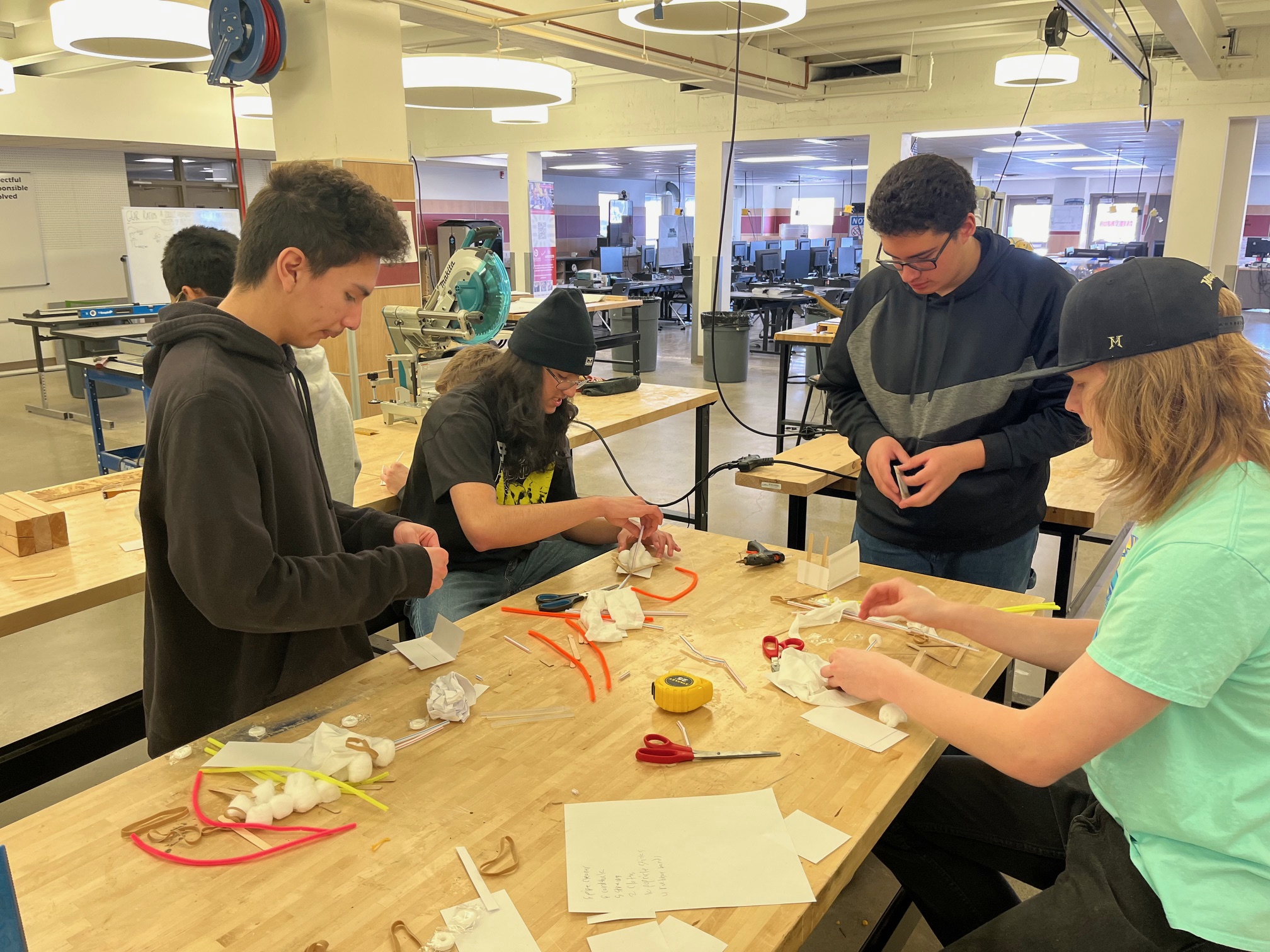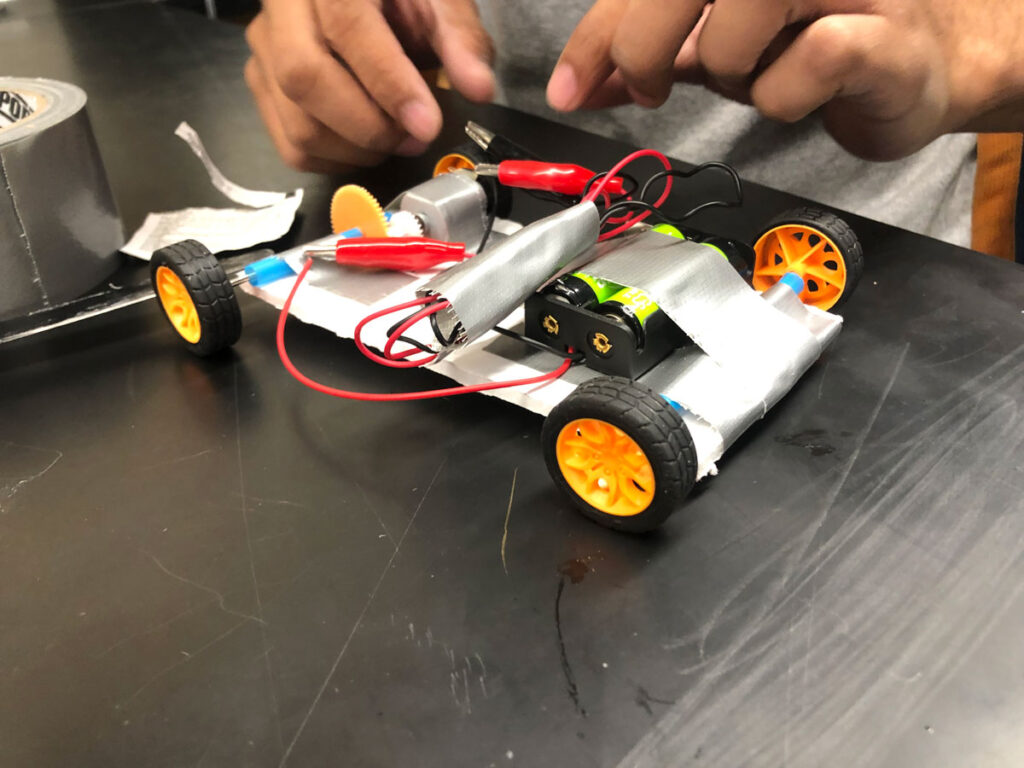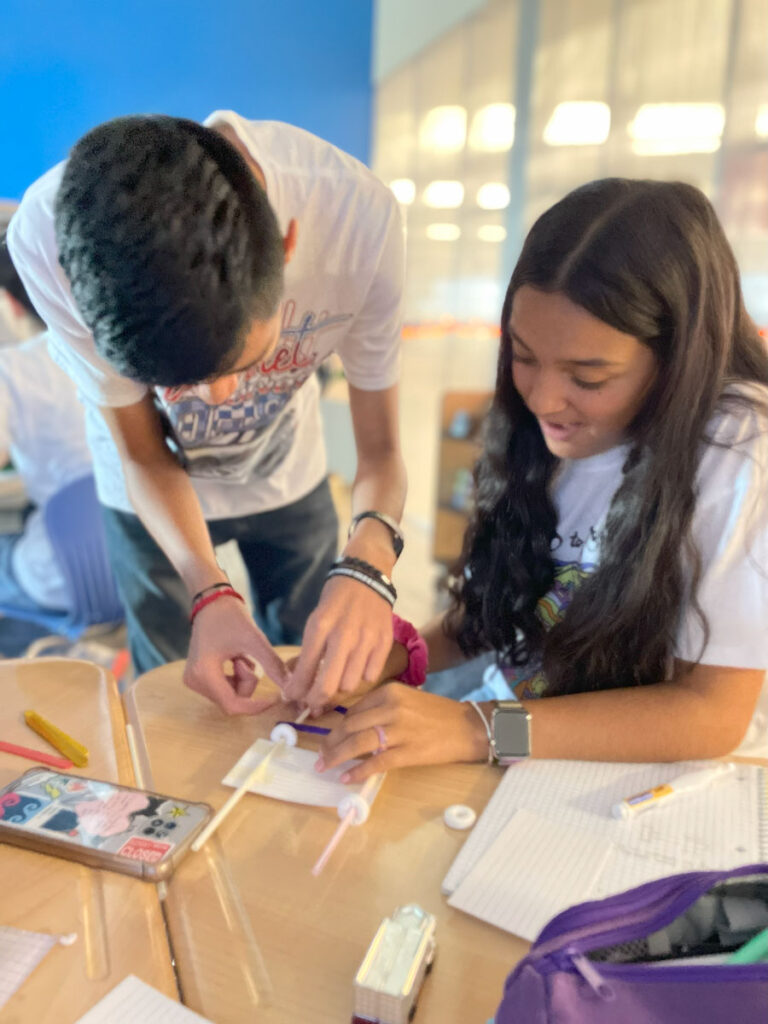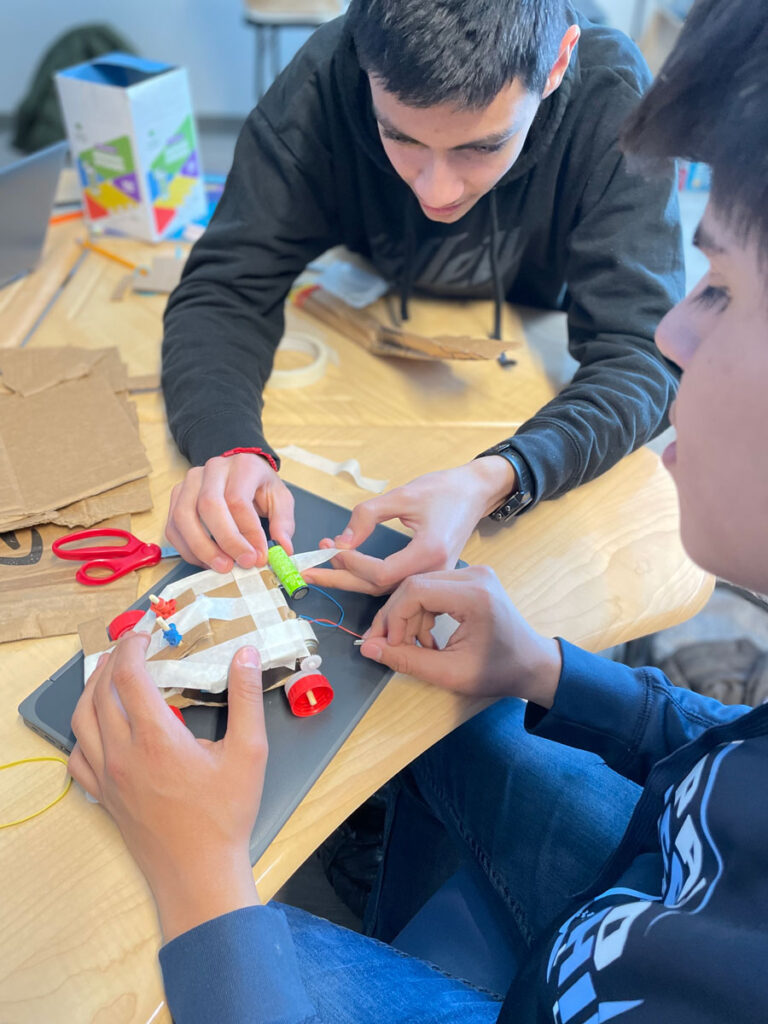ASPIRE’s “Plug and Play” K-12 Engineering Curricula

With a rapidly evolving workforce as new technology and innovative solutions are discovered, it’s becoming more important than ever to begin shaping and supporting the upcoming workforce, starting with K-12 education.
“We know that in the next 10 to 15-plus years from now, we’re going to have a great deal of jobs that we don’t have the people to fill,” said Jennifer Ramos-Chavez, the ASPIRE nonprofit project manager and former project lead of pathways, an ASPIRE project dedicated to education and workforce development. “We don’t have the people skilled or trained to take on these positions that we know are going to be created with advancements in technology.”
Matt Ohland, ASPIRE’s co-director of Electrification Workforce Development, agreed, emphasizing the importance of spreading awareness of this workforce gap at an early age.
“Our youth need to know about the possibility of careers in the Electrification Workforce to choose pathways that lead to those careers,” Ohland said. “Pre-college education is an excellent place to make people aware of those career opportunities, dispel any misconceptions they may have about those technologies, and get them excited about those pathways.”
As electrified transportation and other technology continue to expand, ASPIRE is dedicated to building the foundation for these careers early on with their K-12 curriculum. This spring, the curriculum became more easily available through the ASPIRE K-12 Hub published on the Community of Practice webpage of the TeachEngineering (TE) digital library.
This new ASPIRE K-12 Hub has been viewed over 150,000 times across several different ASPIRE activities, averaging approximately 13,000 views per month.

This hub currently features the Creative Engineering Design (CED) course for high school classrooms and curriculum for K-5 students, including an original picture book written by Ramos-Chavez and ASPIRE Co-Director Ivonne Santiago. Ramos-Chavez shared that the curriculum is “literally plug and play.”
“If a teacher has never taught engineering before, they can feel 100% confident,” she said. “There’s a lot of embedded support. There’s a lot of autonomy in that too, as teachers can veer off and add their own things, then plug in the curriculum as they see fit.”
The ASPIRE curriculum was developed, in partnerships with piloting teachers, by Jennifer Taylor, a collaborator in ASPIRE’s Pathways project, to ensure it was adaptable nationwide, incorporating feedback from a variety of charter, private, and public classrooms.
“CED was classroom-tested in schools across the country engaging 1200 students ensuring that the resources we provide are both instructionally sound and engage authentic learning,” said Taylor, who is also the University of Colorado Boulder’s pre-college engineering director.
Through TE, teachers everywhere now have access to the standards aligned curriculum that emphasizes real-world application and meaningful learning activities to excite students’ interest in STEM career pathways.
The CED project-based introductory high school course breaks engineering applications into six modules, making it adaptable for classes ranging from eight weeks to an entire year in length. Through an emphasis on the iterative design process and teamwork, students experience first-hand what engineering is like.


As students build their confidence in this iterative engineering design process, they explore real-world applications of engineering through interactive projects and skills-building activities, including introductory CAD and electronics workshops.
“Exposing students to engineering skills in the K-12 space provides valuable early learning experiences in using the tools that engineers use,” Taylor said.
A unique aspect of CED is the ArcGIS Environmental Impact StoryMap collection, which explores the relationship between air quality, transportation, and engineering. The browser-based StoryMaps embed geospatial data, which doesn’t require a login or download to access, so teachers can easily incorporate place-based topics into their classroom. From there, teachers have the opportunity to adapt it and make it their own.
“The teachers who piloted the K-5 program extended the curriculum and had their students build a car of the future and showcase it at a Family STEMFest,” Taylor said. “The students’ creativity, energy, and excitement to share what they knew and had learned was inspiring to see in the model cars the student teams had created.”
These and countless other teachers, as millions of teachers use TE resources in their classroom, have the opportunity to use the open-source curricula, adapt the resources to fit their instructional needs, and grow their capacity in engineering education.
In the coming months, middle school activities focusing on electrical energy and magnetism concepts will be added to the website to bridge the K-12 continuum, further expanding the reach and impact of ASPIRE’s curricula.
For teachers and other educators interested in the curriculum, check out the ASPIRE K-12 Hub on Teach Engineering. For more information about ASPIRE’s education efforts, reach out to Jennifer Taylor.
About ASPIRE:
ASPIRE, a National Science Foundation Engineering Research Center headquartered at Utah State University, leads groundbreaking research and development to accelerate electrification. With over 400 global collaborators, ASPIRE focuses on creating seamless, affordable electrified transportation systems, accessible for all vehicle classes, along with the public infrastructure needed to support them. By reducing emissions, improving air quality, and fostering economic growth through job creation and workforce training, ASPIRE’s work spans engineering, social science, policy, and business. Partnering with top universities, industry leaders, and community groups, ASPIRE is driving the future of advanced transportation. Learn more at aspire.usu.edu.
Contacts:
Jennifer Ramos-Chavez
Nonprofit Program Manager
ASPIRE ERC
Jennifer Taylor
Pre-College Engineering Director
University of Colorado Boulder
Writer:
Kayleigh Kearsley
Marketing & Communications Intern
ASPIRE ERC